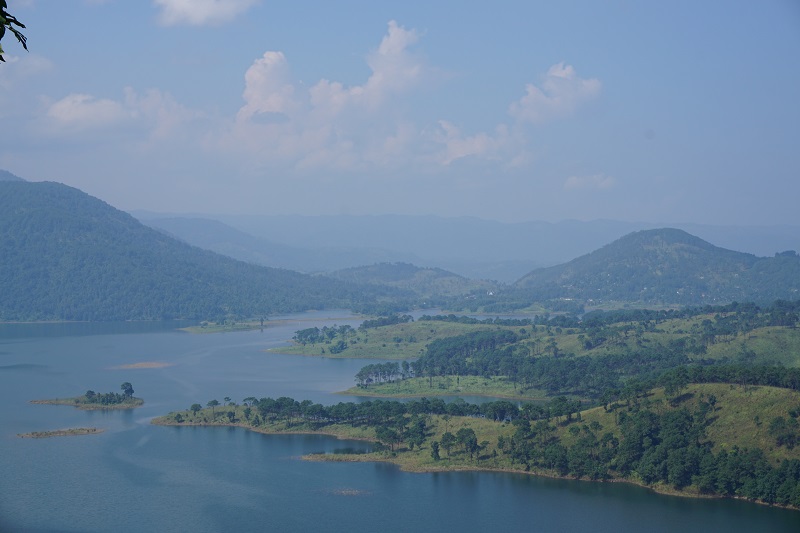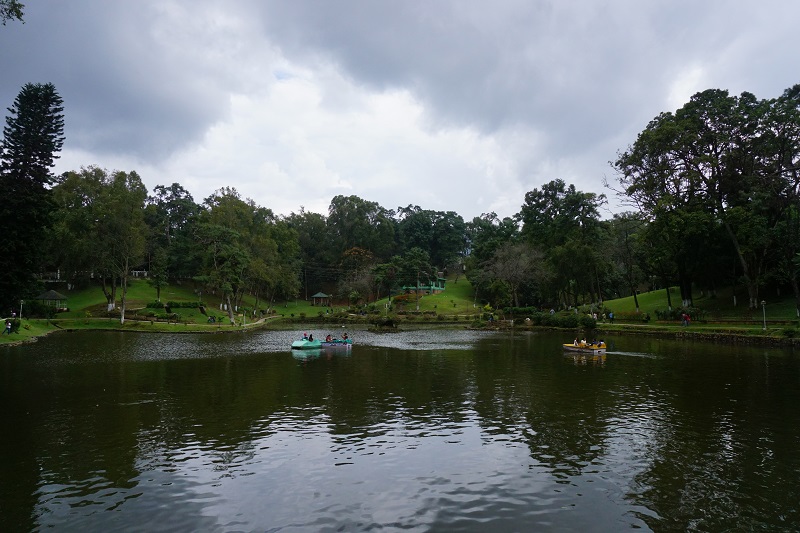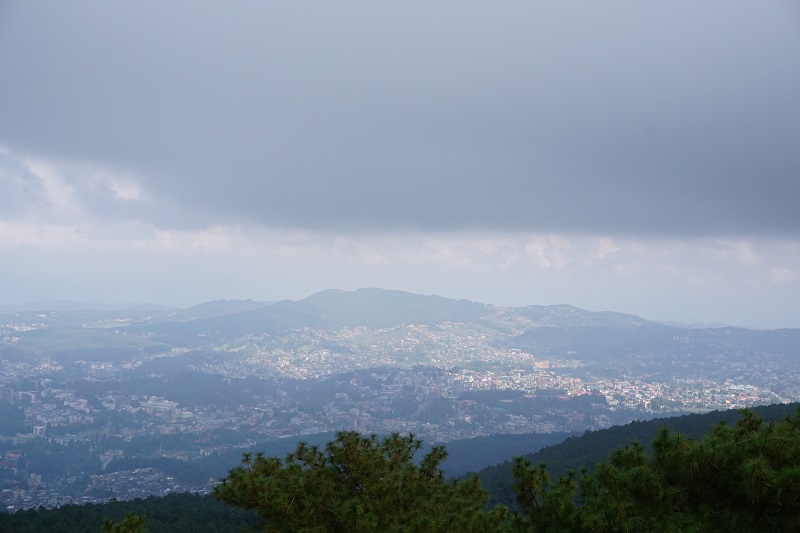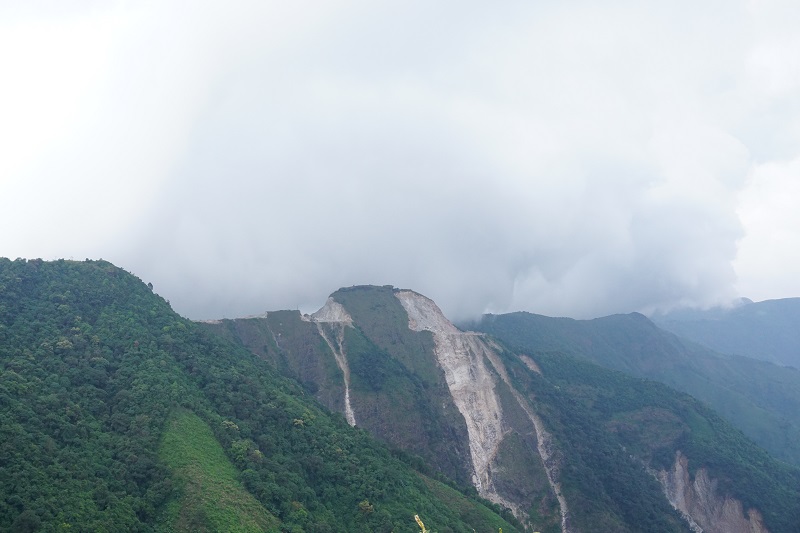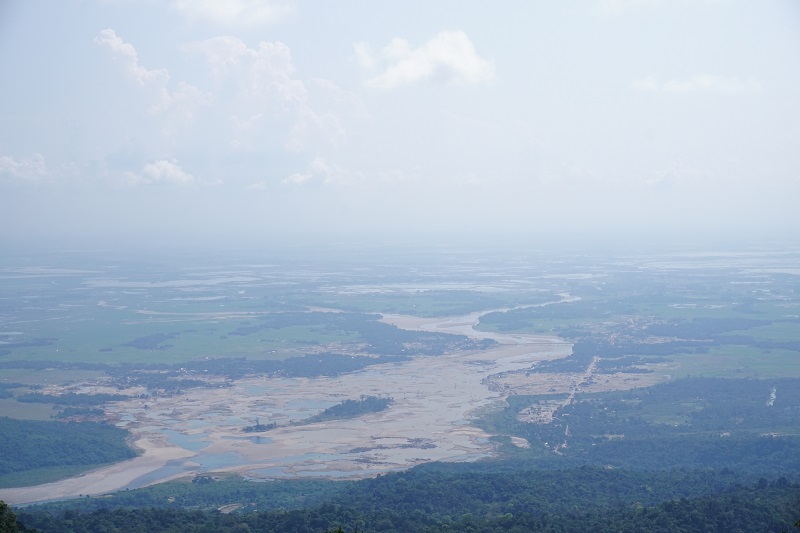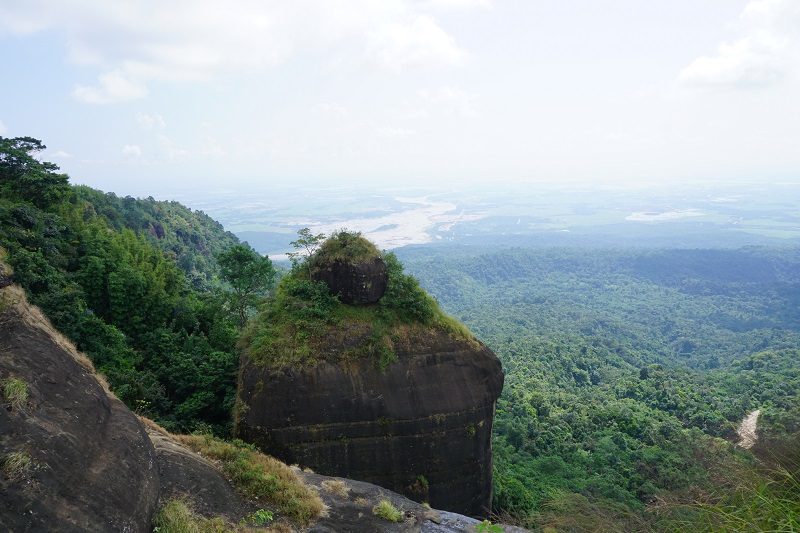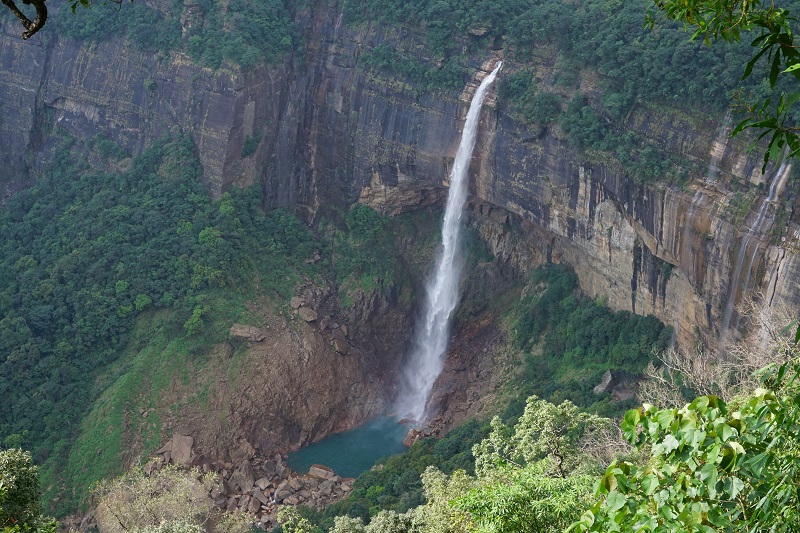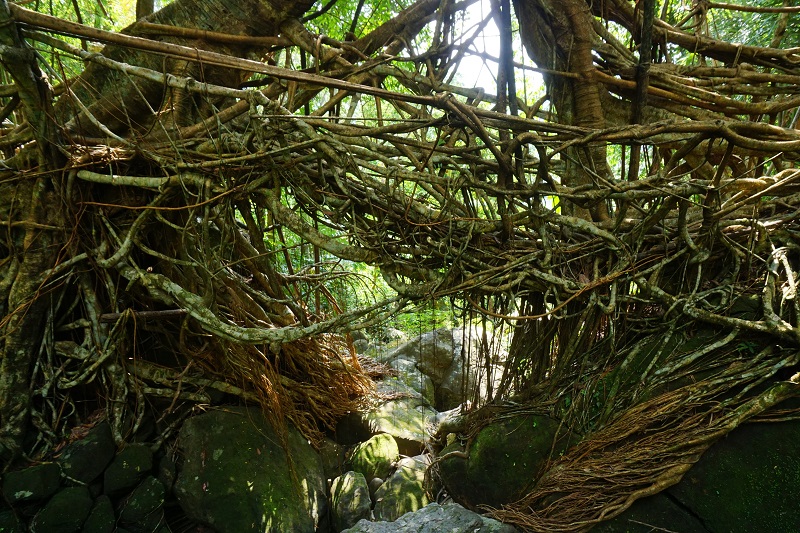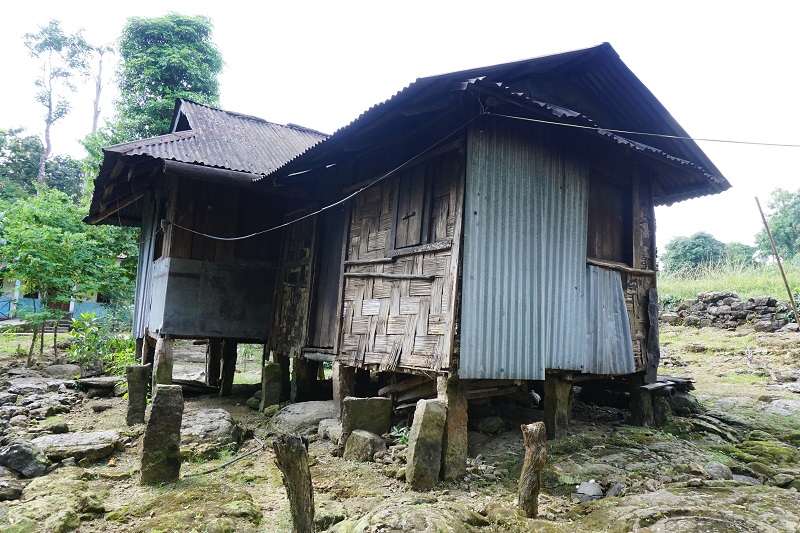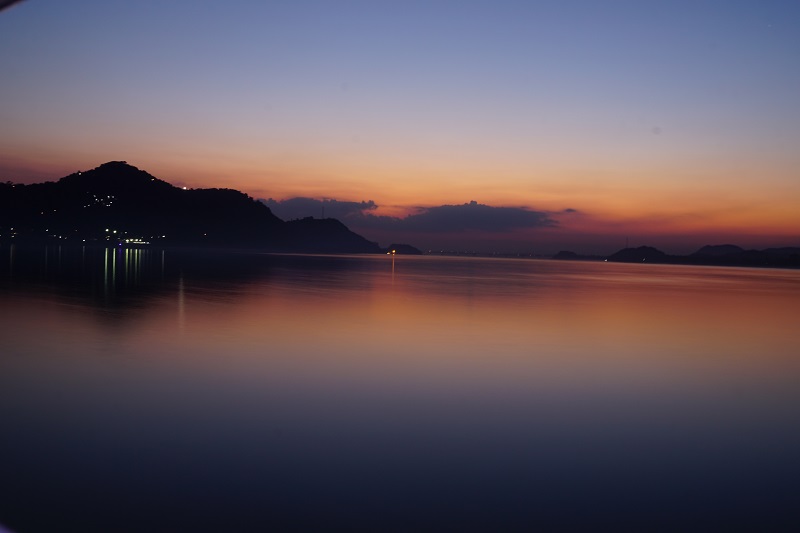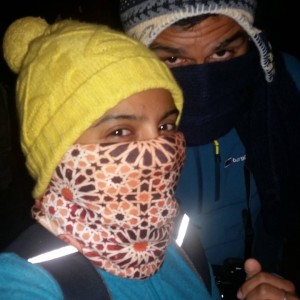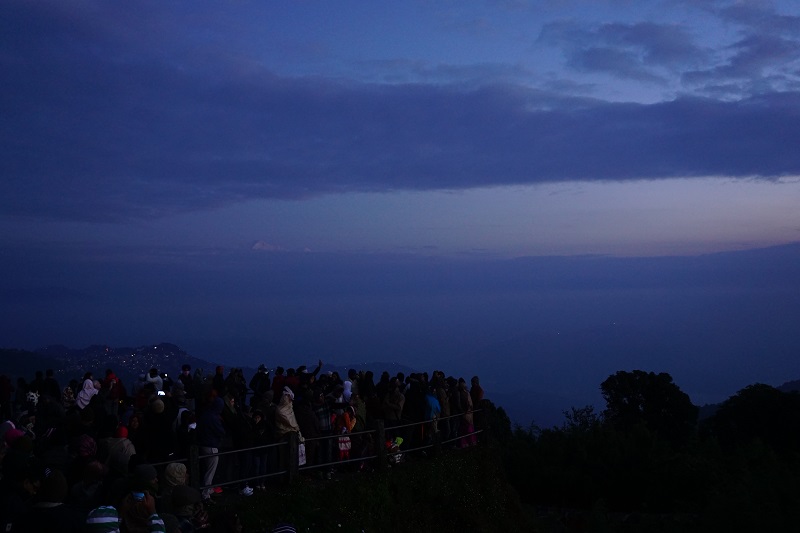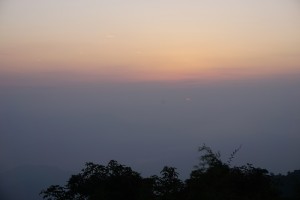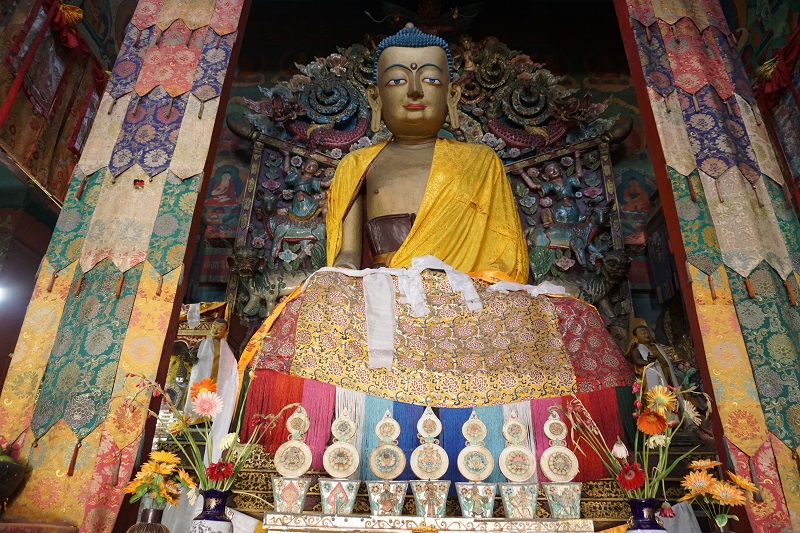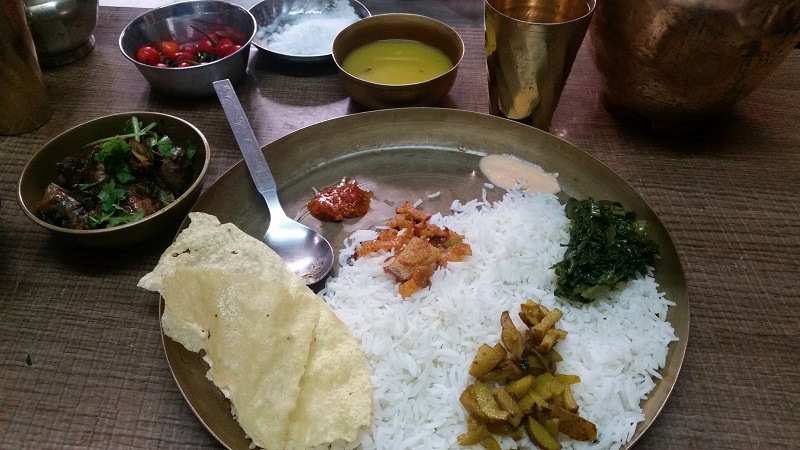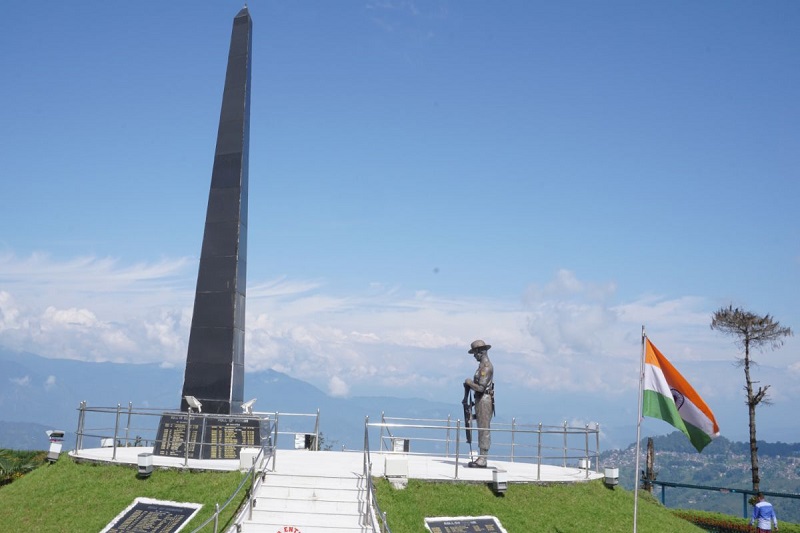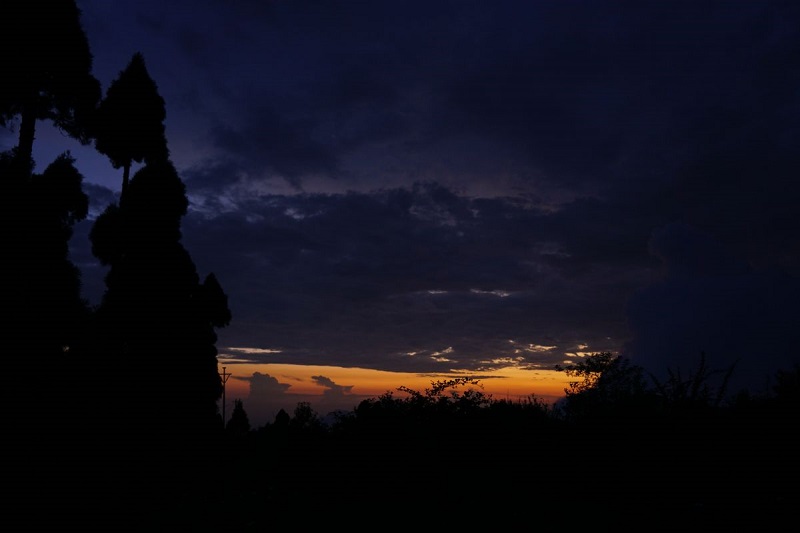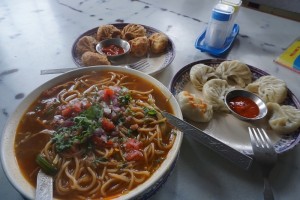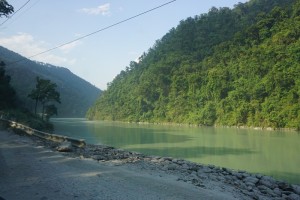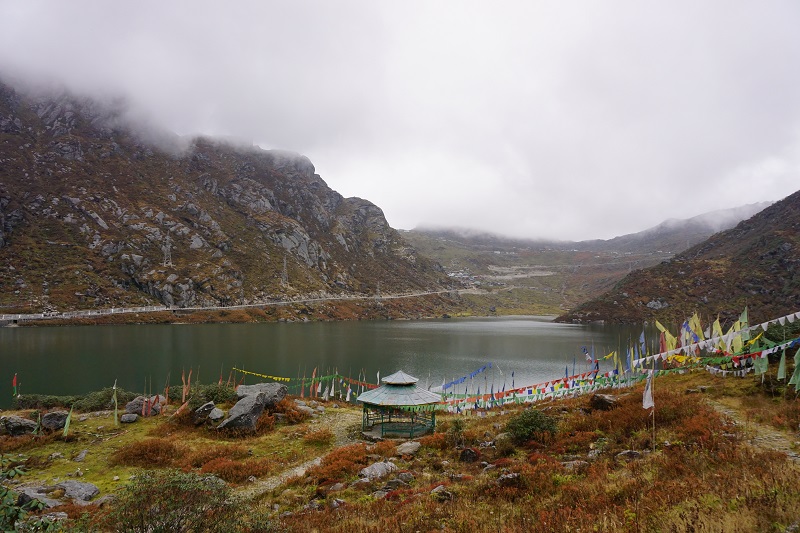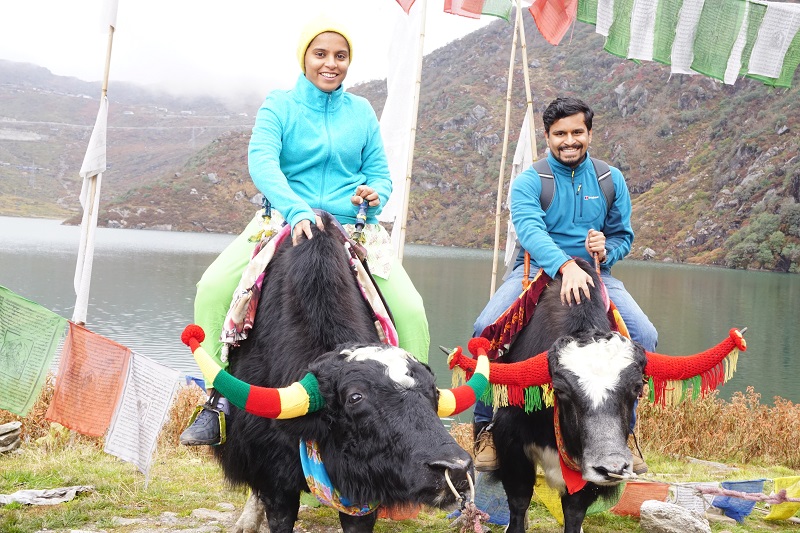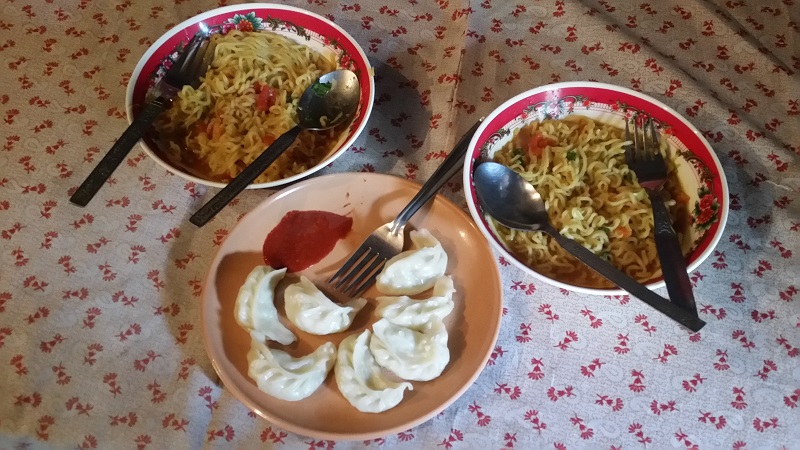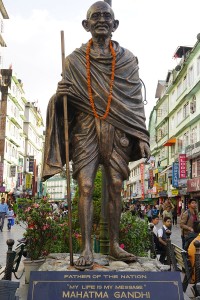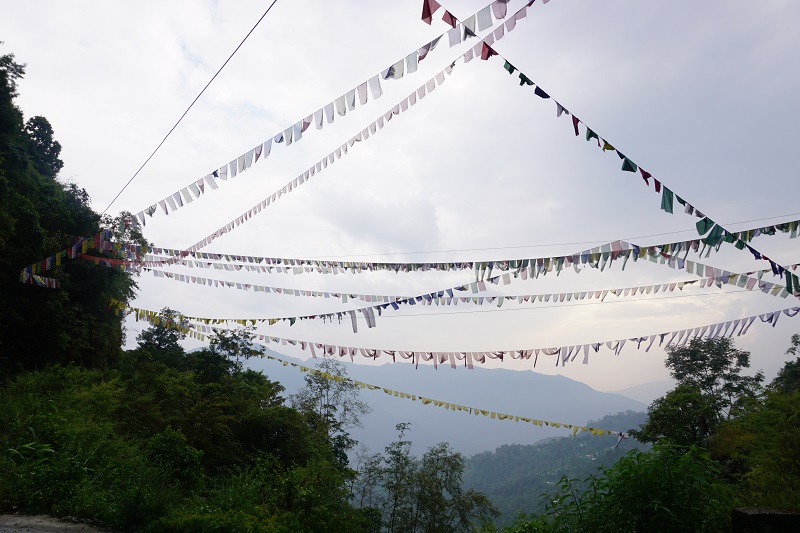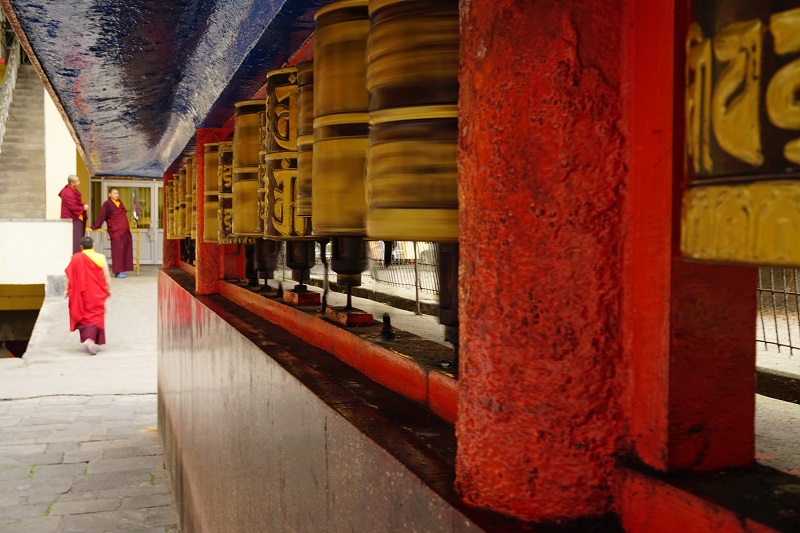Meghalaya – The Abode of Rains
Meghalaya is a state in India’s Northeast on the border with Bangladesh. It is famous for its rains, tribal culture, rock bands and amazing flora and fauna.
We travelled to Meghalaya in the same tour as mentioned in previous posts. Since our last destination, Darjeeling and Shillong, Capital of Meghalaya, are separated by hundreds of kilometers, train was our best option. We arrived in Guwahati, an Assam city, to meet our driver, who then drove us to Shillong. Meghalaya border is only 18 km from Guwahati while Shillong is 90 km. Getting there by road from Guwahati was the best option.
Umiam Lake
Since we arrived very early in Shillong, we had lots of time before check in. The driver took us to Umiam lake to kill some time. As we neared the lake, we couldn’t believe our eyes. The lake was beautiful beyond belief, the deep blue color against the green hills. It was one of the cleanest and untouched lakes that we have seen in India.
Sightseeing in Shillong
As part of the tour, we did some sightseeing in Shillong. We visited the Don Bosco Cultural Museum where we spent a couple of hours. The museum gave information about the North East Region, it’s geography, it’s people and cultures. The information on the tribes of the North East Region was invaluable and we were thankful for so much information. We were especially glad to have the information about the Khasi Tribe which is predominant in Shillong, Cherapunjee and Mawlynnong areas. Moreover, The view from the roof top gallery was also amazing as it gave the full view of the Shillong valley.
We then proceeded to Wards Lake which was a small and pretty man-made lake. As we bought tickets for entry, we pondered whether we skip this lake as no matter how pretty it was, it couldn’t match the beauty of Umiam Lake. However, we had just ordered our coffee and some snacks at the lake cafe when the heavens opened up. The rain came pouring in as the clouds thundered above. Not listening to our guts meant that we had to wait it out. After 45 mins, we had enough and joined some of the cafe workers who were running out under a picnic umbrella, yes picnic umbrella!
We continued our tour the next day and saw the Elephant Falls and the Shillong Peak. Both of these are must dos in Shillong and you will not be disappointed. The falls are huge and one gets to understand the huge amount of water coming down the hills of Shillong.
The peak is also a magnificent and gives the full view of Shillong city.
Damaged Hills
The rest of our days in Meghalaya involved day trips around the Khasi hills. These hills are old mountains very similar to the Blue Mountains in Sydney. They are small, green and contain rain forests. One of the first things we noticed was the destruction of the hills and hill tops for extracting building material.
While one can understand the need to extract building material, the scale of the destruction was immense. The entire stretch between Shillong, Cherrapunjee and Mawlynnong had damaged hills. We only hope this will change in the future.
Cherrapunjee
Cherrapunjee is a well known town in India for being the wettest place, not just in India but also the world, or at least it used to be. No trip to Meghalaya is complete without a visit to Cherrapunjee. The landscape of the area is so beautiful that while at the top of the hill, it feels like the rolling hills of Scotland or New Zealand while down in the valleys, one could be in Australian rain forests.
One of the most amazing sites in the area was seeing the plains of Bangladesh. When the subcontinent was partitioned, the Garo and Khasi hills went to India while the plains of Slyhet went to East Pakistan which eventually became Bangladesh. All the rivers of Meghalaya drain in Bangladesh so all one can see are lakes and fields. A beautiful sight!
Another beautiful sight in the area was the upturned basket rock, traditionally called Khoh Ramhah. It was a cylindrical shaped black rock in the hills overlooking the Bangladesh plains. There was a waterfall in the vicinity but we decided to climb down to another waterfall in the area.
Finally, we saw more waterfalls and hills in the area. However, the most amazing was the Noakhilikai Falls where the falls dropped into a blue pond. We couldn’t help but thinking that we were close to home in the Blue Mountains.
Root Bridges
The Khasi Tribesmen had been using root bridges for centuries to cross waterfalls. They guide the roots of banyan trees using bamboo but eventually remove them as the roots grow thick over the years. Some of the bridges are 100s years old and can carry the weight of over 50 people.
On the way to Mawlynnong
Mawlynnong is a village in the East Khasi Hills some distance away from Shillong which has been dubbed as Asia’s cleanest village. As part of the tour, we got to visit it and the surrounding villages.
On the way, we stopped at another living root bridge at the Riwai Village. It was the biggest root bridge we had seen and it was almost a 100 years old. Interestingly, the original designers did not get to walk on the bridge itself. While the bridge was full of tourists, the locals were busy washing their clothes on the river. We couldn’t help but think that while the tourists enjoyed themselves on their property, life was as tough for the locals as it was a 100 years ago.
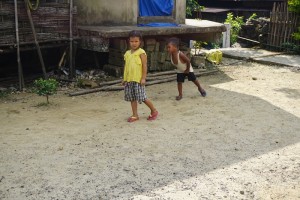 We decided to walk a little further to the Nowet Lookout. As it happened, the lookout was on the other side of the village and we got to watch the village life go by. There were kids playing, chickens running around the village as well as other animals like dogs and pigs. The houses had traditional thatch roofs with bamboo for walls and support. Modernity had reached the houses as some houses had dish TV and a few houses were made of brick.
We decided to walk a little further to the Nowet Lookout. As it happened, the lookout was on the other side of the village and we got to watch the village life go by. There were kids playing, chickens running around the village as well as other animals like dogs and pigs. The houses had traditional thatch roofs with bamboo for walls and support. Modernity had reached the houses as some houses had dish TV and a few houses were made of brick.
We had imagined the lookout to be a concrete platform built by the Government as is common for the area. However, upon getting to the lookout, we realised that it was a village owned lookout made by a handful of people. The lookout was completely natural made of bamboo, tired with natural rope and supported by a tree on the side of the mountain. It probably would not pass a safety test in Australia but it was one of the best lookouts we have seen. The view was also magnificient as the Riwai river came down the hills on its way to Bangladesh.
Mawlynnong itself was a tiny little village atop a hill with a view of the plains. It was certainly clean and beautiful but nothing too interesting to write about. It seems someone had created Mawlynnong as a tourist destination with the surrounding villages as stop off points. We had a traditional lunch in the village before heading back.
Guwahati
We were in Assam for 1.5 days to see the sights of the city. Our first stop was the famous Kamakhya temple. Being Navratri (nine holy days of the Goddess), the temple was full of people and the line to enter the main temple was several hours long. We decided to take the shorter route from which we could see the idol of the Goddess.
Once done with this, we walked around and saw the animal sacrifice in the vicinity. Animal sacrifice is uncommon in temples nowadays but it is a common ritual during Navratri. Though we don’t do it ourselves, it is an accepted part of Shakta and Tribal Cultures in the area. The temple is famous throughout India for its power and healing.
Brahmaputra
Ever since I was little, I had heard about Brahmaputra river. It is the biggest river in India even bigger than the Ganges. There were stories of its might and its mystique as a home to cannibal tribesmen and Hindu tantrik holymen. Therefore, although we could have gone to Kolkata after Shillong, I wanted to see this river and the city.
We got to visit the Umananda Temple which was on an island in the middle of the river. The river though not very fast was constant and its width really was huge.
We had another chance of going to the Brahmaputra on an evening cruise. Boarding the cruise ship, we got to take some nice sunset shots, have a couple of drinks and even danced a little.
This ended our trip in Guwahati as well as the tour of the North East region.
Final Thoughts
Shillong was certainly one of the cleanest places in India that we have been to. There was a traffic problem but overall it was a beautiful city.
Culturally, Shillong was the most different place in India that we visited. The Khasi tribe is completely Christian due to the missionaries from Europe in 18th Century. We never saw any Hindu Temples and most people in the city were tribal. The women would wear a checked or colored cloth around their torso and tied at the shoulder. Eating paan with lime and beatel nut was a common thing in Shillong. Everyone had Red lips from it but unlike the north, no one spat it out.
There was only one problem in Shillong. The internet was very bad in the city. However, this may be due to our operator.
Guwahati was our last stop in the North East. We weren’t expecting beauty like Sikkim or cleanliness like Shillong, though a lot of the highlights were shut.
The tour itself was a major highlight for us. It had taken a couple of months with several tour operators to sort out the details but we finally managed to do it. The tour gave us a little more information on the region and we would definitely be back though may spend more time in Sikkim or further east like Nagaland or Manipur.
